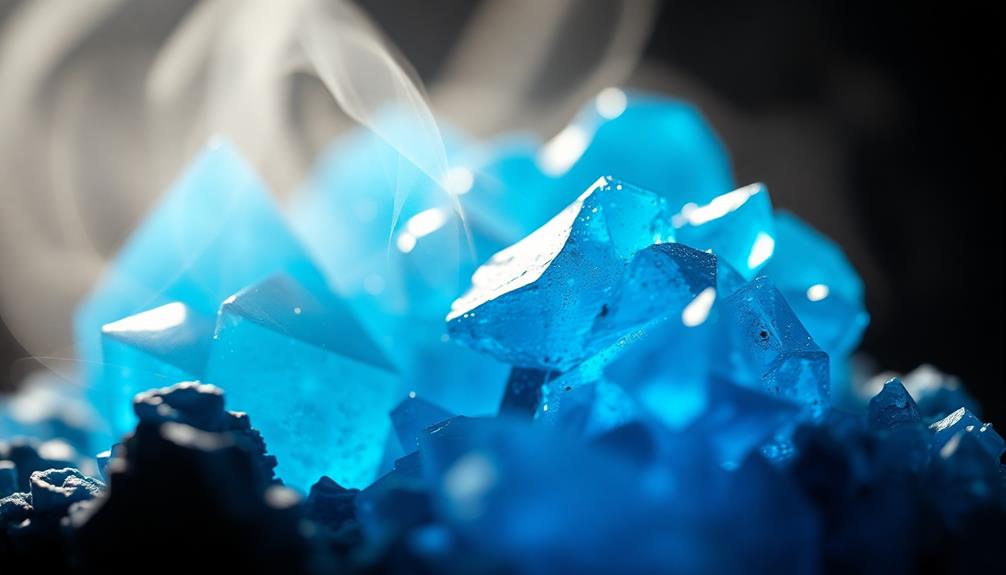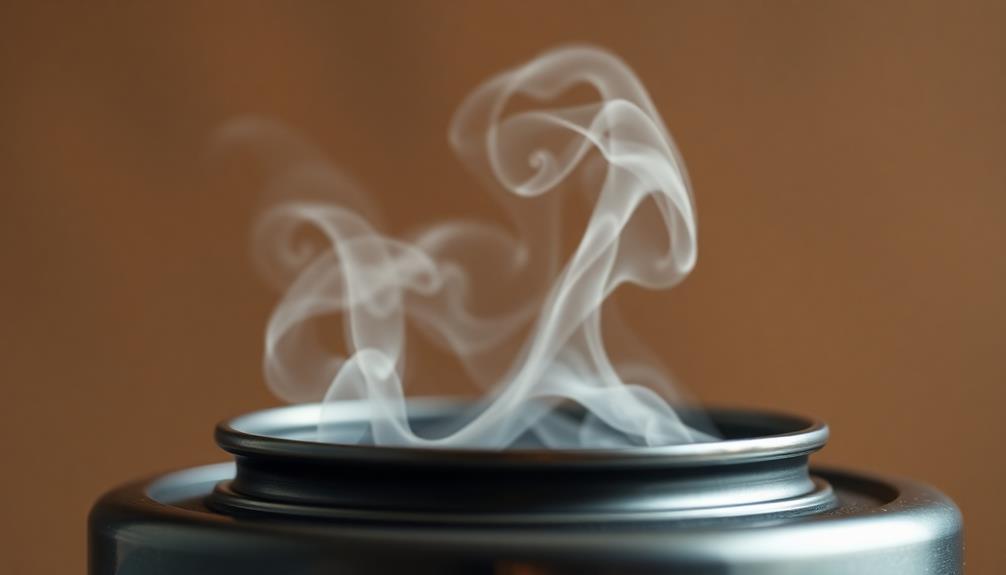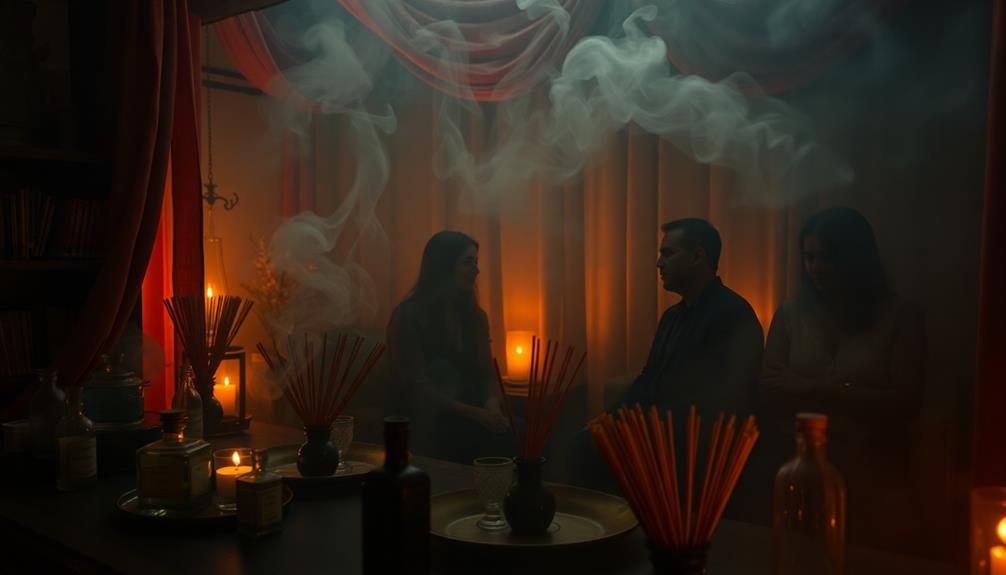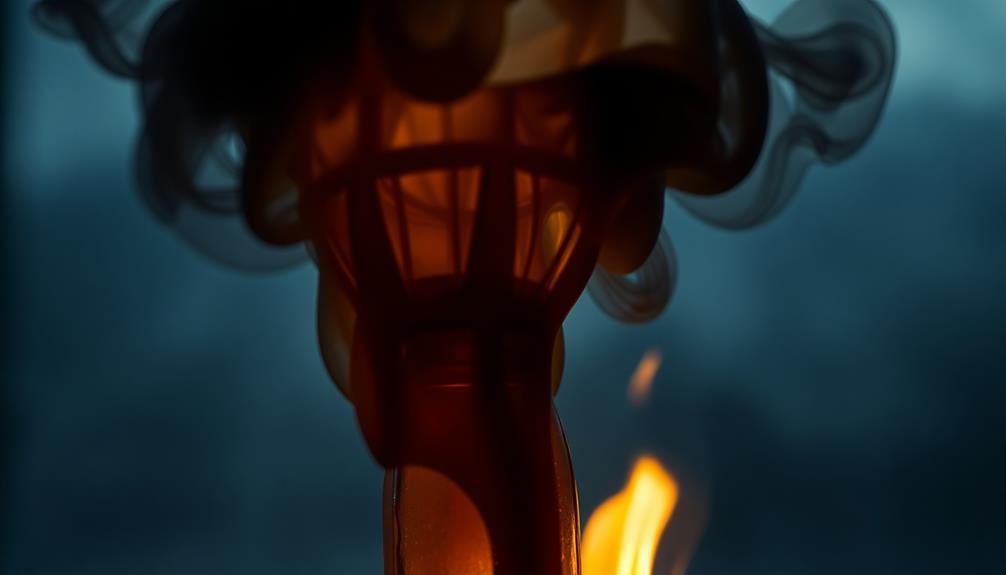Carbon monoxide, or CO, doesn't smell like anything at all! It's a sneaky gas that you can't detect without special detectors, which makes it quite dangerous. CO is created when fuels like gas, wood, or coal burn improperly. You might find it lurking near gas stoves, running cars, or cozy fireplaces. Since it's colorless and odorless, it's super important to have working carbon monoxide detectors in your home so you can stay safe. Remember, being aware of CO can help keep you and your family protected, and there's much more to discover about this mysterious gas!
Key Takeaways
- Carbon monoxide (CO) is odorless and colorless, making it difficult to detect without specialized equipment.
- The lack of scent means CO poses a silent and serious health threat.
- CO is produced from incomplete combustion of fuels such as gas, wood, and coal.
- Common sources of CO include gas stoves, fireplaces, and running vehicles in enclosed spaces.
- The importance of carbon monoxide detectors is crucial for early detection and safety in homes.
Introduction

When you think about the scent of carbon monoxide (CO), it's essential to remember that it's actually odorless and colorless. That's right! You can't smell it, and that makes it a sneaky little gas that can be quite dangerous.
It's produced when fuels like gas, wood, or coal don't burn completely. Imagine if your favorite campfire didn't burn all the way! While that might seem harmless, it can release CO into the air, which isn't good for you.
Because CO has no smell or color, it's super important to have carbon monoxide detectors in your home. These handy devices can alert you if CO is present, keeping you and your loved ones safe.
So, if you ever hear a loud beep from your detector, you might want to take it seriously!
Learning about carbon monoxide is like being a detective. You've got to know what to look for, even if it's invisible.
Description of the Smell

Carbon monoxide is notorious for its complete lack of scent, making it a silent threat in our homes and surroundings. Imagine walking into a room and not smelling anything at all, yet something dangerous might be lingering! That's exactly what makes carbon monoxide so tricky. You won't notice it like you'd with a smelly sock or burnt toast.
Instead, it's like the sneaky ninja of gases, quietly floating around without giving you any hints. This can make it hard to believe it's there because, unlike smoke or rotten eggs, there's no odor to alert you. You could be going about your day, feeling perfectly fine, when, in fact, you might be breathing in something harmful!
That's why it's super important to have carbon monoxide detectors in your home. They'll beep and warn you if carbon monoxide is present, saving the day like a superhero!
Source and Composition

Sources of carbon monoxide are commonly found in everyday activities and appliances. You might be surprised to learn that this invisible gas can come from things you use every day! For instance, when you cook on a gas stove or light a fireplace, carbon monoxide can be produced.
Believe it or not, even your car emits this gas when it's running!
Carbon monoxide is made up of one carbon atom and one oxygen atom, which is why it's called CO. It's colorless and odorless, making it tricky to detect, but that doesn't mean it's harmless. In high amounts, it can be very dangerous!
You should also know that taking care of your appliances is important. A poorly vented furnace or a blocked chimney can create more carbon monoxide than usual.
Typical Scenarios or Environments

Many everyday environments can unknowingly expose you to carbon monoxide. Imagine cozying up next to a gas fireplace on a chilly evening. While it feels warm and inviting, it's important to know that the fire can produce carbon monoxide if not vented properly.
Similarly, if you're out in the garage, running a car or even a lawnmower, those engines can release this sneaky gas, too.
Even your kitchen can be a source of carbon monoxide if you're using gas stoves or ovens without proper ventilation. You mightn't smell anything, but it's wise to be aware!
So, what can you do? Make sure your home has working carbon monoxide detectors installed. They act like little superheroes, alerting you if CO sneaks in.
Regular maintenance of your appliances is also key, so they run safely and efficiently.
When you're having fun outdoors, like camping, always use grills or generators outside, away from tents. It's all about staying smart and safe!
Emotional or Cultural Associations

How does the scent of danger linger in our minds when we think of carbon monoxide? It's fascinating how smells can trigger memories or feelings, even if we can't detect them directly. For many, carbon monoxide represents hidden threats, like a stealthy villain in a movie. You might associate it with cold winter nights when people use heaters, creating a cozy atmosphere that might also hold a secret danger.
Culturally, this scent ties into stories and warnings passed down through generations. Families often share tales about the importance of detectors, reminding everyone to stay safe. You might even hear jokes about how your parents are "overly cautious," but that's just love speaking!
In some places, the smell of danger can stir feelings of fear or anxiety, while in others, it might lead to a sense of comfort, knowing you've taken precautions.
Overall, the emotional connection to carbon monoxide is a mix of caution and care. It serves as a reminder to appreciate the cozy things in life while also being aware of the hidden dangers that can lurk in the shadows.
Health or Safety Considerations

Carbon monoxide (CO) poses a significant health risk, often going unnoticed until it's too late. You might wonder, "What's the big deal?" Well, CO is a sneaky gas that you can't smell or see. It comes from things like cars, heaters, and stoves, and when it builds up in closed spaces, it can be really dangerous!
If you breathe in too much CO, it can make you feel dizzy, tired, or even sick. Imagine trying to run a race while feeling super sleepy—that's what CO does to your body! It can mess with your brain and heart, making it harder to think clearly or move around.
That's why it's essential to have a carbon monoxide detector in your home. This little gadget can alert you if CO levels get too high, giving you a chance to get to safety.
Final Thoughts

Taking the threat of carbon monoxide seriously can save your life and the lives of those around you. This colorless, odorless gas is sneaky and can be very dangerous. You mightn't even know it's there until it's too late! That's why understanding how to recognize the signs and being prepared is crucial.
Always check your home for carbon monoxide detectors, and make sure they're working. It's like having a superhero in your house, ready to alert you to danger!
If you ever feel dizzy, nauseous, or sleepy—especially when others feel fine—don't ignore it. Get fresh air immediately and call for help!
Remember, knowledge is power! By learning about carbon monoxide, you're protecting yourself and your loved ones.
Share what you learn with friends and family, because the more people who know, the safer we all are.
Frequently Asked Questions
Can Co Be Detected by Animals or Pets?
Yes, pets can detect CO, though their sensitivity varies. Dogs and cats might notice changes in air quality or behavior. Keeping your home safe with detectors is essential, as animals can help alert you to danger.
Does Co Smell Differ in Various Geographical Locations?
You might notice that the smell of certain gases can vary based on geographical location. Factors like environmental conditions and local industry can influence how these smells are perceived differently in various regions.
How Does Co Smell Change With Temperature?
When temperatures rise, the smell of substances can intensify or become less detectable. You might notice that warmer conditions enhance certain scents, while cooler temperatures can mask or diminish them, affecting your overall perception.
Are There Specific Brands of Co That Smell Different?
You might notice that different brands of CO can have subtle scent variations due to additives or production processes. Some brands focus on creating a unique user experience, influencing the scent you perceive.
Can Food or Drinks Alter the Perception of Co Smell?
Yes, food and drinks can definitely alter your perception of smells. Strong flavors, like spicy or sweet foods, might mask scents, while others can enhance or change how you experience different aromas.










